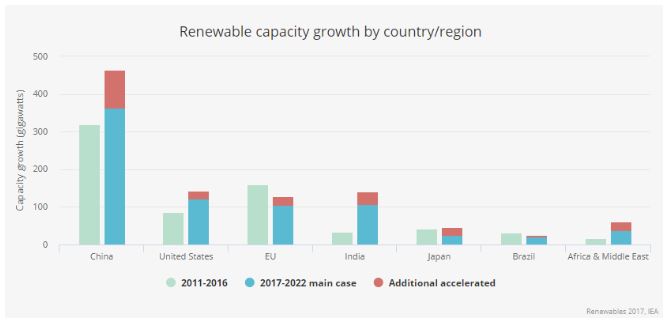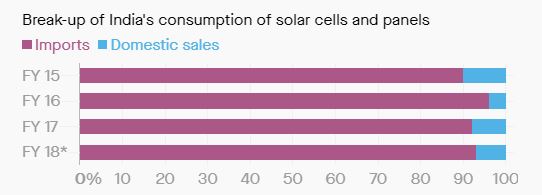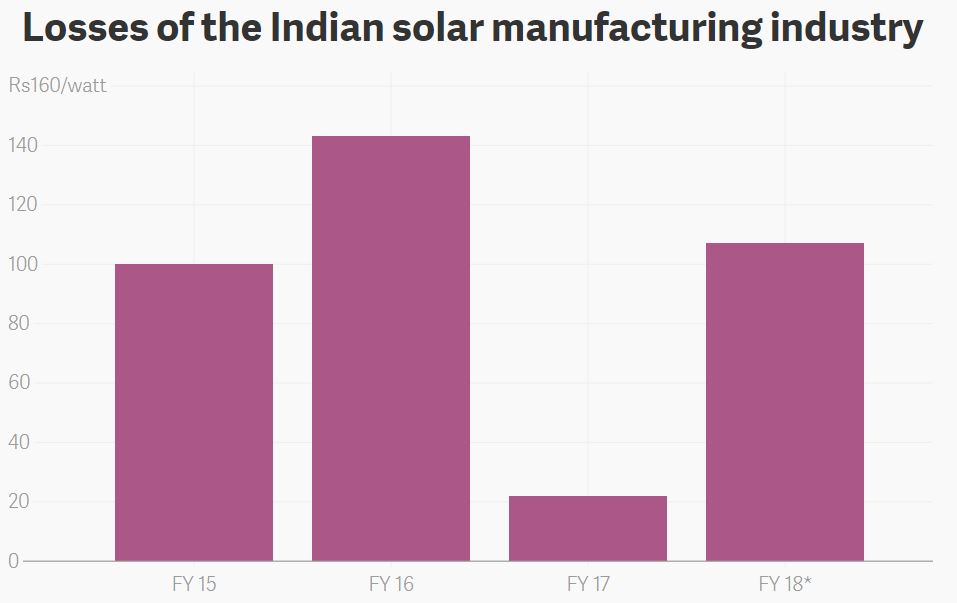Fossil fuel reserves are limited and are very close to depletion. The continuously shrinking reserves have given rise to energy cost, which stand to deprive more people (already 1 bn people live without electricity) of energy and spewed toxic fumes that have led to environmental degradation. Facing such a scenario, the world is on its way to adopt sustainable energy that can offer release from economic and environmental binds forged by fossil fuel usage. Solar continues to win the favour of the world as the best replacement of fossil fuels. However, what it can bring is more than sustainable energy for all; it can offer a chance to build a better economy and social structure within a country, which developing countries desperately need.
What The Opportunity Entails?
Solar energy transition is definitely an opportunity by every meaning. Why? Because energy and economy are interconnected. Therefore, with sustainable energy growth that saves money and satisfies energy demand will facilitate a better-formed, operational, and progressive economy. Solar energy transition can help countries by saving billions in fossil fuel imports, fostering industrial growth, creating jobs, bringing technological growth, and claiming the export market. Understanding the benefits, countries are increasing their share of renewable energy within energy generation mix.

Global average annual net capacity addition- (Image Curtsey: IEA)
We can easily see that opting for sustainable energy through solar and countrywide development are closely connected and follows each other. And data shows, solar PV project auctions in emerging markets rose by 4.5 times within 2013-17, therefore it is apparent that worldwide acceptance for solar certainly speaks in the favour of solarisation.
However, benefiting from such an opportunity depends only upon building solar manufacturing scale. For example, we can indicate the growth trajectory China has shown by supporting its solar manufacturing. China was able to become the global solar supplier, undercutting the market prices and claiming foreign markets due to its manufacturing scale. This has allowed countries like China to flourish while the opportunity of building one’s own solar manufacturing capacity is lost to developing countries.

Renewable energy capacity growth by country- (Image curtsey: IEA)
Why Developing Countries need Solar Manufacturing?
Why manufacture? Why not import cheaper solar components from foreign suppliers? Well, because although imported solar components like module may appear cheaper to buy, they are actually robbing a country of the chance to build manufacturing capacity and facilitate overall growth. Developed countries have understood that and acted towards protecting their solar industry. Developing countries like India have also shown great interest in solarisation and initiated policies like Make in India to protect and support domestic manufacturing. However, unfortunately these initiatives have fallen prey to importing solar due to its affordability (In FY 17-18 the expenditure stood at $3.8 billion).

Import vs domestic solar equipment usage in India- (Image curtsey: DGTR)
Domestic manufacturing initiatives like India’s ‘Make in India’ could have supported the country by bringing investment, encouraging entrepreneurs, building industrial setups, creating jobs and claiming the export market for lucrative sectors, like Solar (just like China did). However, lack of focus in favourable policy development, lack of investment in manufacturing, continuous importing solar, and recent issue of 25% safeguard duty imposition on domestic solar manufacturers (SEZ based) have resulted into something other than success for India.
As a result, we can see fall in solar demand in 2018, which is expected to affect 2019 as well.

India’s solar demand forecast- (Image curtsey: MERCOM)
Therefore, without any hesitation we can state that developing countries like India need to build domestic manufacturing capacity to grow, because importing solar is just like spending money on fossil fuel. Sure, environment will be safe through solar import, but your economy will not.
Building Domestic Manufacturing Capacity Is a Necessity
If we take Indian solar industry scenario for example, we will see that despite the country’s intent to build solar capacity, its continued solar import rather than solar manufacturing has given ~80% domestic solar market share to foreign suppliers. This has reduced India’s solar export, limited job creation, industrial development, in overall sense of progress. Developed countries like US are trying to get out of this bind by imposing anti-dumping duties on China, Malaysia and other countries.

Losses of the Indian solar manufacturing industry- (Image Curtsey: DGTR)
Way Forward
Solar stands as a great opportunity for developing countries to phase out fossil fuel and its growing expenses while transforming the country with industrial, social, and economic growth. And Initiatives like International Solar Alliance (ISA) that offer technology exchange options, financial support, strategic support are also here to make the situation even better. However, developing countries like India must invest and focus in domestic manufacturing to avail these benefits. Prioritizing domestic manufacturing can afford developing countries the best possible opportunity to become energy self-reliant, creating jobs, trade relations, and economic stability. However, the time is now to solve internal issues and invest in solar manufacturing to see the results.
